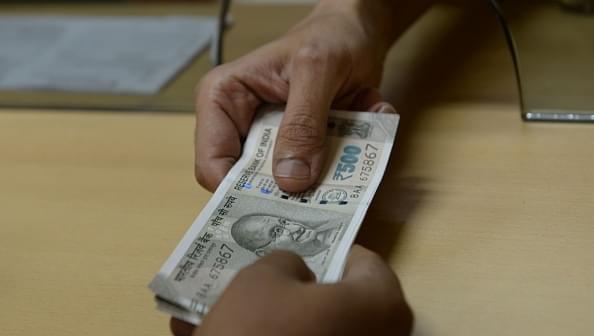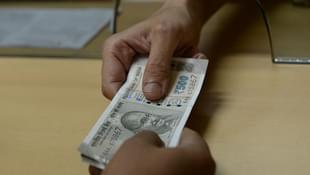Economy
Government Must Focus On Short And Long Term Reforms To Ease Demonetisation Blues
Seetha
Dec 09, 2016, 06:22 PM | Updated 04:53 PM IST
Save & read from anywhere!
Bookmark stories for easy access on any device or the Swarajya app.


That the economy will slow down as a result of demonetisation is now official. The Reserve Bank of India (RBI) has pegged growth in this fiscal down to 7.1 per cent from its estimate of 7.6 earlier. The NITI Aayog vice-chairman, Arvind Panagariya, has also said in this interview that hopes of 8 per cent growth will come only towards the end of 2017-18.
But even that is not likely to come if the government sits on its hands. Remember next year, the goods and services tax (GST) regime will kick in, if not from 1 April, then definitely from 1 October. That will create some disruption of its own.
Something clearly needs to be done to help the economy get back on to the fast track. There’s little that can be done in the remaining three and a half months of this fiscal, other than ensuring that the cash replacement problem is sorted out at the earliest and people start spending again. But the government’s economic managers can start drawing up plans about how to perk up the economy once the immediate crisis has passed and improve its overall competitiveness.
It is now amply clear that the demonetisation exercise is going to result in a revenue windfall for the government. As of now, Rs 11.5 lakh crore of cash has come into the banking system since November 8. There are doubts about whether some of this is due to double counting; the State Bank of India estimates that of the Rs 11.5 lakh crore, 10-15 per cent will be the result of double counting. But that will still mean deposits of around Rs 9 lakh crore.
Some of this may not attract tax at all, but the rest will, and this may well be at the highest slab. More importantly, when income tax returns are filed next year, if people are unable to explain the cash they deposited, they may have to shell out hefty tax and penalties. In addition, one will have to see the response to the second Income Declaration Scheme (IDS) – the tax to be paid in this case is 50 per cent. Some of this may be paid this year itself.
So between the first IDS in September (which was estimated to yield a revenue gain of Rs 29,000 crore) and the second one, government coffers are going to be flush with funds. This needs to be channelled into the infrastructure sector. The figures put out on growth in the first half of this financial year show that investment demand is still not picking up; the private sector is not investing enough. Public sector infrastructure projects may give the much-needed demand boost that the economy needs.
The government needs to pay close attention to the small and medium enterprise sector. This is the sector that has been affected most by the demonetisation exercise. Jayant Sinha had said so soon after in this interview to Swarajya. And this interview with the secretary-general of the Federation of Indian Micro Small and Medium Enterprises (FISME) shows he was right. It will also find the adjustment to a new goods and services tax (GST) regime painful. This segment of industry – which accounts for the bulk of employment – will need a helping hand.
The government has said that the demonetisation exercise and the push for a cashless economy will help in bringing the large informal sector into the formal sphere. But this will not happen by changing the way financial transactions are done. Enterprises prefer the pains of informality because the burdens of formality are more onerous – labour laws and statutory welfare payouts and frequent inspections. The FISME secretary general’s interview highlights some of these pain points. These have to be mitigated on an urgent basis.
That said, not all of the issues that the SMEs face can be addressed by the central government; there’s a lot in the realm of the state governments. But apart from doing whatever is within its power to do, the centre needs to persuade the states to do their bit.
The demonetisation exercise may have brought out the stock of black money held in cash, but this needs to be followed up by measures to prevent the future generation of such money. This requires long term measures like poll funding reform, but some quick steps can also be taken. The forthcoming budget can, for starters, undertake some serious rationalisation of direct taxes. Abolishing income tax may be too radical a move, but why not raise the exemption limit for income tax and tweak the tax rates to discourage evasion?
Serious efforts to rein in the tax bureaucracy are also needed. Scrutiny of cash deposited in bank accounts as well as of tax returns filed post-demonetisation is certainly going to be stricter than before, but care needs to be taken that this does not result in tax babus going on fishing expeditions. Here, too, it may be the small businessmen and traders who may bear the brunt and any unwarranted harassment could affect businesses and overall sentiment.
This government’s many detractors will, true to form, blame it for bringing the economy to ruin. Let us concede that overstatement. But since it is often said that in India, reforms and drastic action happen only in crisis situations, perhaps this can become a heaven sent opportunity to push through whatever is needed to put the economy on a firmer footing.
Seetha is a senior journalist and author





